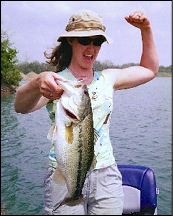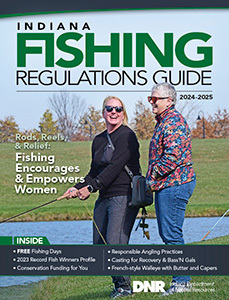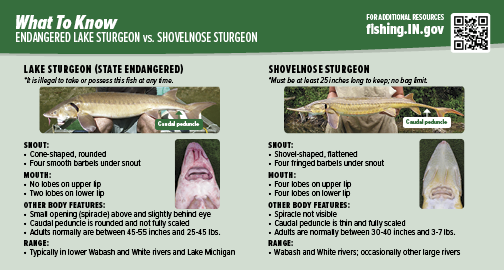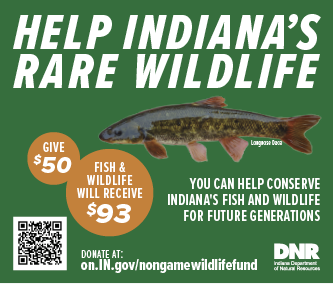Messages

Fishing has always been a part of our lives in the Bortner household, and this guide’s theme of women and fishing reminds me of the joy it has brought us.
It’s not only the activity of getting on or around the water and throwing in a line and hoping they are biting, but the entire process before, during, and after. When our two daughters were young, we lived just a few miles from what was then a State Fish Hatchery in Avoca. In our many visits there, they learned how the DNR raises various fish species to stock Indiana waters for Hoosiers to catch.
Inspired by that knowledge, we spent many Saturday mornings joining the local Girl Scout troops to bank fish at Spring Mill State Park’s lake. Now that our daughters—and new daughter-in-law—have families of their own, we still enjoy getting together for a fish fry of our catches!
It’s “all in the family” when it comes to making memories from fishing. This year, find a family who doesn’t fish. Do what you can to get them interested, particularly the female head of the household. Research has shown that women are the pathway to getting their family involved in an activity, and that includes fishing.
I invite you to help us get more women, and by extension the rest of the family, involved in fishing. Doing so will put smiles on a lot of faces.
Best of luck on the water.
Dan Bortner
Director, Indiana Department of Natural Resources

My love for fishing started at a very young age. As I was growing up, my mom, dad, brother, and I would take our little aluminum bass boat out on Hardy Lake. Mom taught me how to fish, helping my brother and I hook our baits, place our lines in the water, and remove fish from our hooks. She taught us how to cast and tie on hooks so we could fish independently, how to use slip bobbers so we weren’t constantly tangled, and how to be patient so we could relax while on the water.
We grew with our fishing adventures, advancing to bigger boats and fishing for different species with my dad. I cherish these memories and now get to re-create these experiences with my husband and sons.
During the first eight years of my career, I ran DNR’s fishing education program and learned many new things about fishing, people, and Indiana’s natural resources. We’re lucky to have a bountiful system of rivers, streams, reservoirs and natural lakes in Indiana, as well as dedicated volunteers, individuals, and organizations who provide community for those without family or friends to teach them to fish. I see their dedication at the State Fair Fishin’ Pond, in our Becoming an Outdoors-Woman program, and in fishing clubs and chapters like Casting for Recovery and Bass’N Gals.
While I encourage everyone to share the joys of fishing with their families, I also urge you to broaden your horizons and fish with other groups that can support or even accompany you on your outdoor adventures.
Amanda Wuestefeld
Director, DNR Division of Fish & Wildlife








